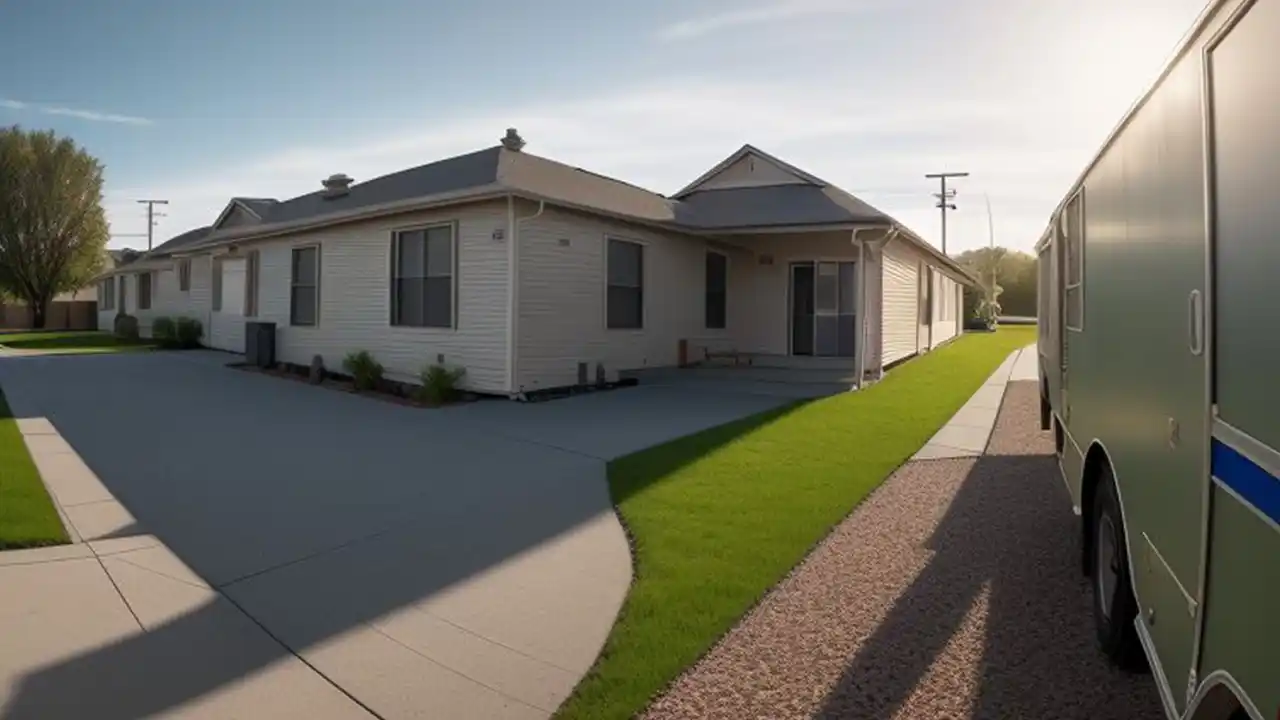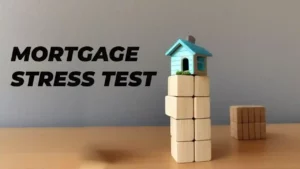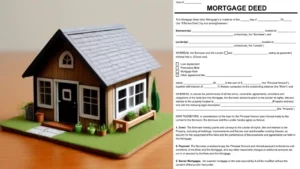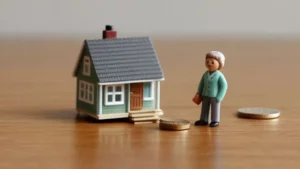Mortgagerateslocal.com – Are you looking for a way to use your home equity without having to make monthly payments? Do you want to have more cash flow and flexibility in your retirement? If so, you may be interested in a reverse mortgage line of credit.
A reverse mortgage line of credit is a type of loan that allows you to borrow money against the value of your home. Unlike a traditional mortgage, you do not have to repay the loan until you die, sell your home, or move out. Instead, you can receive funds as a lump sum, a monthly payment, or a line of credit that you can use as needed.
A reverse mortgage line of credit can be a great option for some homeowners who want to supplement their income, pay for unexpected expenses, or enjoy a better quality of life in their golden years. However, it is not a decision to be taken lightly. There are some pros and cons to consider, as well as some alternatives to explore.
In this article, we will explain how a reverse mortgage line of credit works, what are the requirements and costs, how it differs from a home equity line of credit, and what are some alternatives. By the end of this article, you will have a better understanding of this financial product and whether it is right for you.
What Is a Reverse Mortgage Line of Credit?
A reverse mortgage line of credit is a financial product that allows retired homeowners to access the equity in their homes without having to make payments. Instead, the debt is either settled after the consumer’s death or when the house is sold. The most common reverse mortgage line of credit is a home equity conversion mortgage (HECM) that is insured by the Federal Housing Administration (FHA).
With a reverse mortgage line of credit, you can withdraw funds, up to your credit limit, as you need them. You only pay interest on the amount you use, and the interest rate is variable. The unused portion of your credit line grows over time, giving you more borrowing power. You can also pay back some or all of the balance at any time, without any prepayment penalties, and free up that amount for future borrowing.
How Does a Reverse Mortgage Line of Credit Work?
To qualify for a reverse mortgage line of credit, you must meet the following requirements:
- You must be 62 years or older
- You must own your home outright or have a low mortgage balance that can be paid off with the loan proceeds
- You must live in your home as your primary residence
- You must have sufficient income and credit to pay for property taxes, homeowners insurance, and maintenance
- You must receive counseling from an approved HECM counselor
The amount you can borrow depends on several factors, such as your age, the appraised value of your home, the current interest rate, and the FHA lending limit. Generally, the older you are, the more equity you have, and the lower the interest rate, the more you can borrow. You can use an online calculator to estimate how much you can get.
Once you are approved for a reverse mortgage line of credit, you can access your funds in several ways:
- A lump sum: You can receive the entire amount of your credit line at once. This option has a fixed interest rate and may reduce your eligibility for Medicaid and Supplemental Security Income (SSI).
- A tenure plan: You can receive equal monthly payments for as long as you live in your home. This option has a variable interest rate and provides a steady income stream.
- A term plan: You can receive equal monthly payments for a fixed period of time that you choose. This option has a variable interest rate and allows you to plan your budget.
- A line of credit: You can withdraw funds as needed, up to your credit limit. This option has a variable interest rate and gives you flexibility and control over your spending.
- A combination: You can combine any of the above options to suit your needs and preferences.
You can change your payment plan at any time, for a small fee, as long as you have funds available in your credit line.
What Are the Costs of a Reverse Mortgage Line of Credit?
A reverse mortgage line of credit is not free money. You have to pay fees and interest, which are added to your loan balance. The fees include:
- An origination fee: This is charged by the lender to cover the costs of processing your loan. It can be up to $6,000, depending on the amount you borrow.
- A mortgage insurance premium: This is charged by the FHA to protect the lender in case you default on your loan or your home value drops. It is equal to 2% of your home value at closing, plus 0.5% of your loan balance annually.
- An appraisal fee: This is charged by an appraiser to determine the value of your home. It can range from $300 to $500, depending on the size and condition of your home.
- A counseling fee: This is charged by the HECM counselor to provide you with information and guidance on reverse mortgages. It can range from $125 to $250, depending on the agency and the services provided.
- Other closing costs: These include fees for title search, title insurance, credit report, flood certification, recording, and taxes. They can vary by state and lender, but typically range from $1,000 to $3,000.
- A servicing fee: This is charged by the lender to maintain your account and send you statements. It can be up to $35 per month, depending on the payment plan you choose.
The interest rate on a reverse mortgage line of credit is variable, meaning it can change over time based on market conditions. The interest rate is composed of two parts: an index and a margin. The index is a benchmark rate that reflects general market trends, such as the London Interbank Offered Rate (LIBOR).
The margin is a fixed percentage that the lender adds to the index to determine your interest rate. The margin can vary by lender, but typically ranges from 2% to 4%. The interest rate is adjusted monthly or annually, depending on the payment plan you choose. The interest rate is capped at 5% above the initial rate, meaning it cannot increase more than 5% over the life of the loan.
How Does a Reverse Mortgage Line of Credit Differ from a Home Equity Line of Credit?
A reverse mortgage line of credit and a home equity line of credit (HELOC) are both types of loans that allow you to borrow against the equity in your home. However, there are some key differences between them:
- A reverse mortgage line of credit does not require you to make monthly payments, while a HELOC does.
- A reverse mortgage line of credit has higher fees and interest rates than a HELOC, but the fees and interest are added to your loan balance, while the fees and interest on a HELOC are paid out of pocket.
- A reverse mortgage line of credit is only available to homeowners who are 62 years or older, while a HELOC is available to homeowners of any age, as long as they have sufficient income and credit.
- A reverse mortgage line of credit is insured by the FHA, which guarantees that you will never owe more than your home value, while a HELOC is not insured, which means you could owe more than your home value if the market drops.
- A reverse mortgage line of credit has a growth feature, which means that your unused credit line increases over time, while a HELOC has a draw period, which means that you can only access your funds for a limited time, usually 10 years.
What Are the Pros and Cons of a Reverse Mortgage Line of Credit?
A reverse mortgage line of credit can be a useful tool for some homeowners, but it also has some drawbacks. Here are some of the pros and cons to consider before applying for one:
Pros
- It can provide you with extra cash to cover your living expenses, medical bills, home repairs, or other needs.
- It can give you flexibility and control over how and when you use your funds.
- It can improve your cash flow and reduce your tax liability, since the loan proceeds are not considered income by the IRS.
- It can protect you from market fluctuations and inflation, since your credit line grows over time and your interest rate is capped.
- It can preserve your home equity for your heirs, since they can inherit your home and pay off the loan with other assets or by selling the home.
Cons
- It can reduce your home equity and net worth, since the loan balance increases over time and reduces the amount of money you can leave to your heirs.
- It can affect your eligibility for public benefits, such as Medicaid and SSI, since the loan proceeds may count as assets or income, depending on how you receive them.
- It can be expensive, since the fees and interest are higher than other types of loans and are added to your loan balance.
- It can be complicated, since the loan terms and conditions are not always clear and may change over time.
- It can be risky, since you are still responsible for paying property taxes, homeowners insurance, and maintenance, and you could lose your home if you fail to do so.
What Are Some Alternatives to a Reverse Mortgage Line of Credit?
A reverse mortgage line of credit is not the only option for homeowners who want to access their home equity. There are some alternatives that may be more suitable for your situation, such as:
- A home equity loan: This is a type of loan that allows you to borrow a lump sum of money based on the equity in your home. You have to make monthly payments and pay interest, but the interest rate is usually fixed and lower than a reverse mortgage. You can use the money for any purpose, and you retain full ownership of your home.
- A home equity line of credit (HELOC): This is a type of loan that allows you to borrow money as needed, up to a certain limit, based on the equity in your home. You have to make monthly payments and pay interest, but the interest rate is usually variable and lower than a reverse mortgage. You can use the money for any purpose, and you retain full ownership of your home.
- A cash-out refinance: This is a type of loan that allows you to refinance your existing mortgage and borrow more than you owe. You receive the difference in cash, which you can use for any purpose. You have to make monthly payments and pay interest, but the interest rate may be lower than your current mortgage and a reverse mortgage. You retain full ownership of your home, but you increase your debt and reduce your equity.
Conclusion
A reverse mortgage line of credit is a financial product that allows retired homeowners to access the equity in their homes without having to make payments. It can provide extra cash, flexibility, and protection, but it can also reduce equity, affect benefits, and be costly and complex.
Before applying for a reverse mortgage line of credit, you should compare it with other options, such as a home equity loan, a HELOC, or a cash-out refinance, and consult with a financial advisor and a HECM counselor. A reverse mortgage line of credit is not for everyone, but it may be a good option for some homeowners who want to use their home equity to improve their quality of life.




